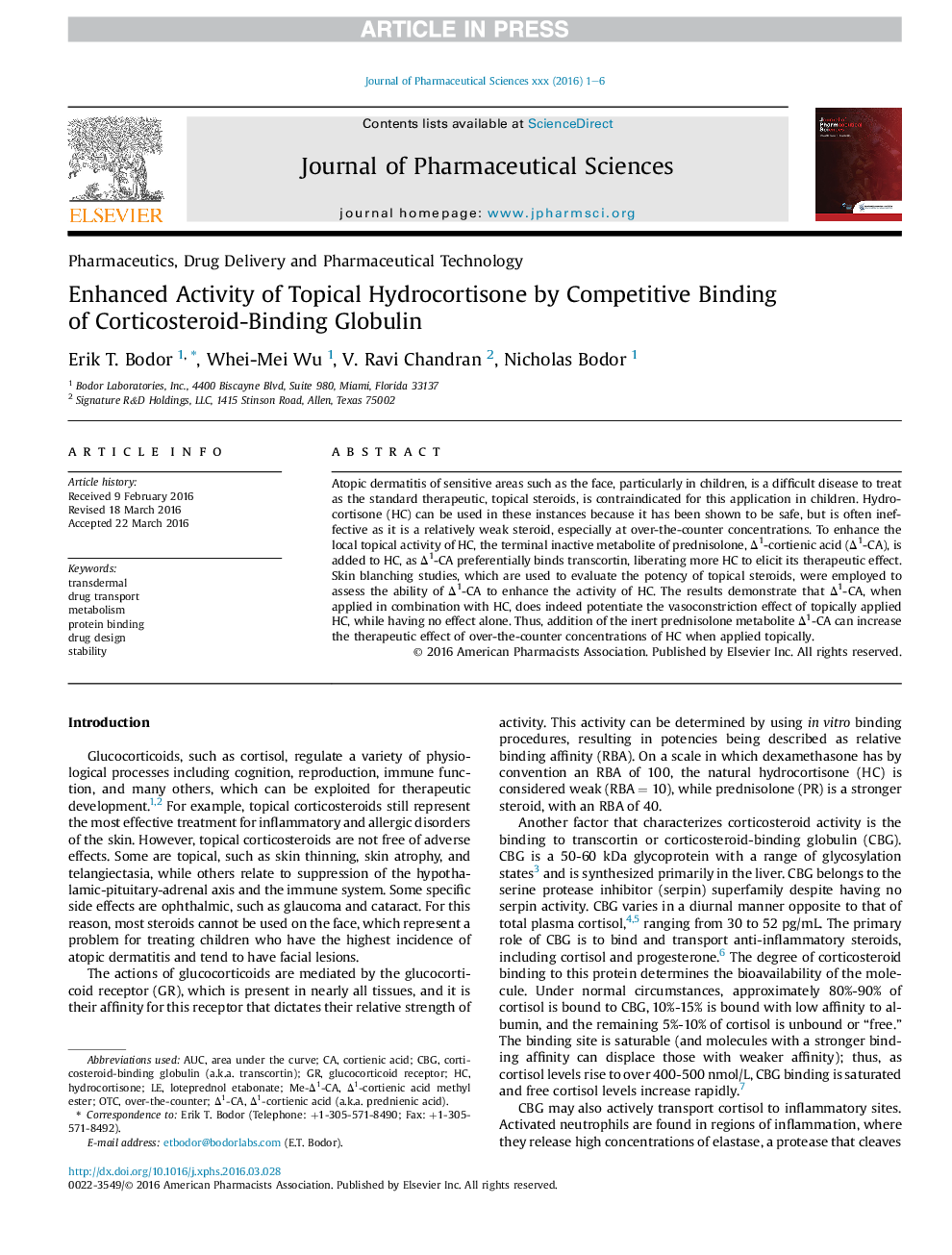| Article ID | Journal | Published Year | Pages | File Type |
|---|---|---|---|---|
| 8515013 | Journal of Pharmaceutical Sciences | 2016 | 6 Pages |
Abstract
Atopic dermatitis of sensitive areas such as the face, particularly in children, is a difficult disease to treat as the standard therapeutic, topical steroids, is contraindicated for this application in children. Hydrocortisone (HC) can be used in these instances because it has been shown to be safe, but is often ineffective as it is a relatively weak steroid, especially at over-the-counter concentrations. To enhance the local topical activity of HC, the terminal inactive metabolite of prednisolone, Î1-cortienic acid (Î1-CA), is added to HC, as Î1-CA preferentially binds transcortin, liberating more HC to elicit its therapeutic effect. Skin blanching studies, which are used to evaluate the potency of topical steroids, were employed to assess the ability of Î1-CA to enhance the activity of HC. The results demonstrate that Î1-CA, when applied in combination with HC, does indeed potentiate the vasoconstriction effect of topically applied HC, while having no effect alone. Thus, addition of the inert prednisolone metabolite Î1-CA can increase the therapeutic effect of over-the-counter concentrations of HC when applied topically.
Keywords
Related Topics
Health Sciences
Pharmacology, Toxicology and Pharmaceutical Science
Drug Discovery
Authors
Erik T. Bodor, Whei-Mei Wu, V. Ravi Chandran, Nicholas Bodor,
